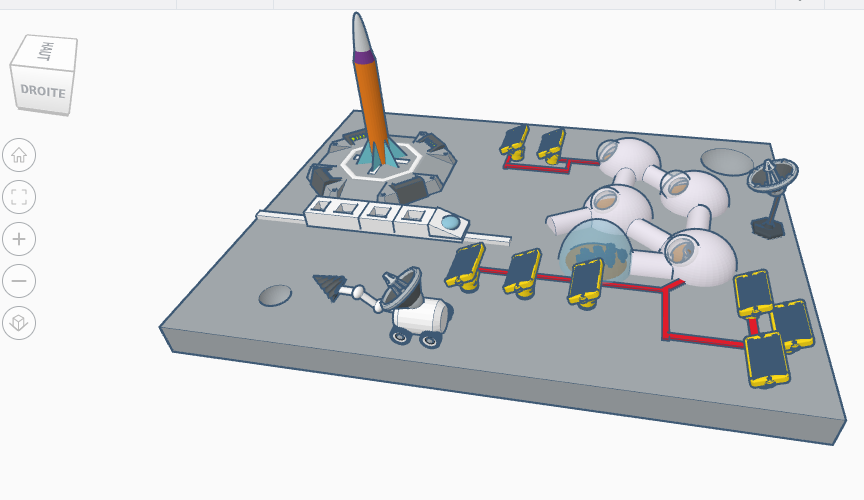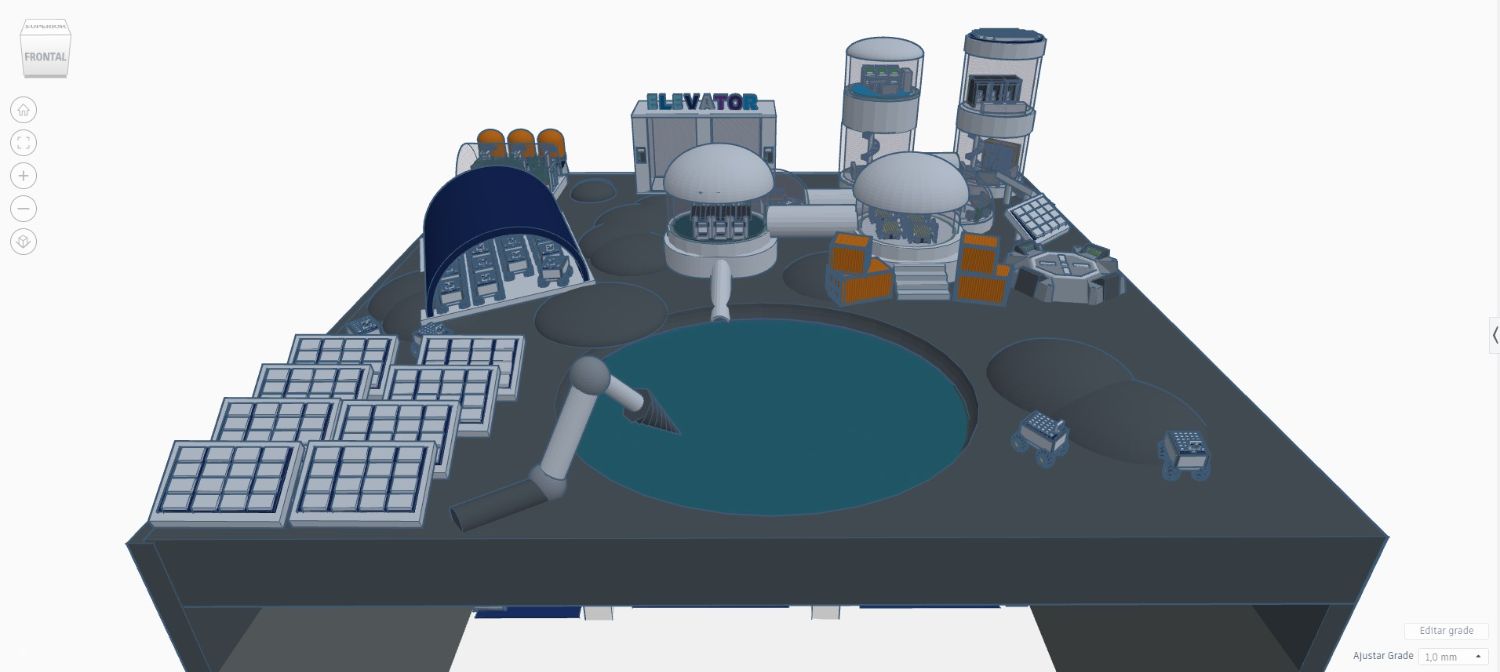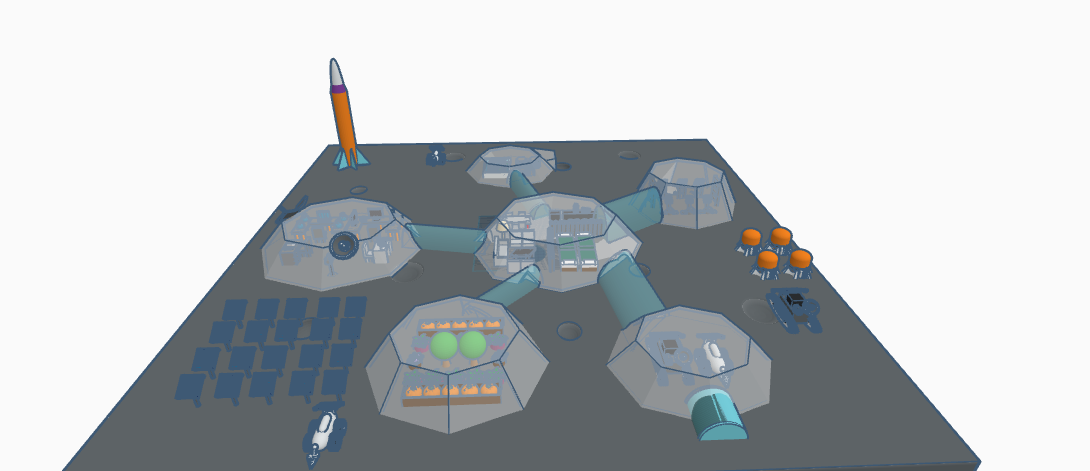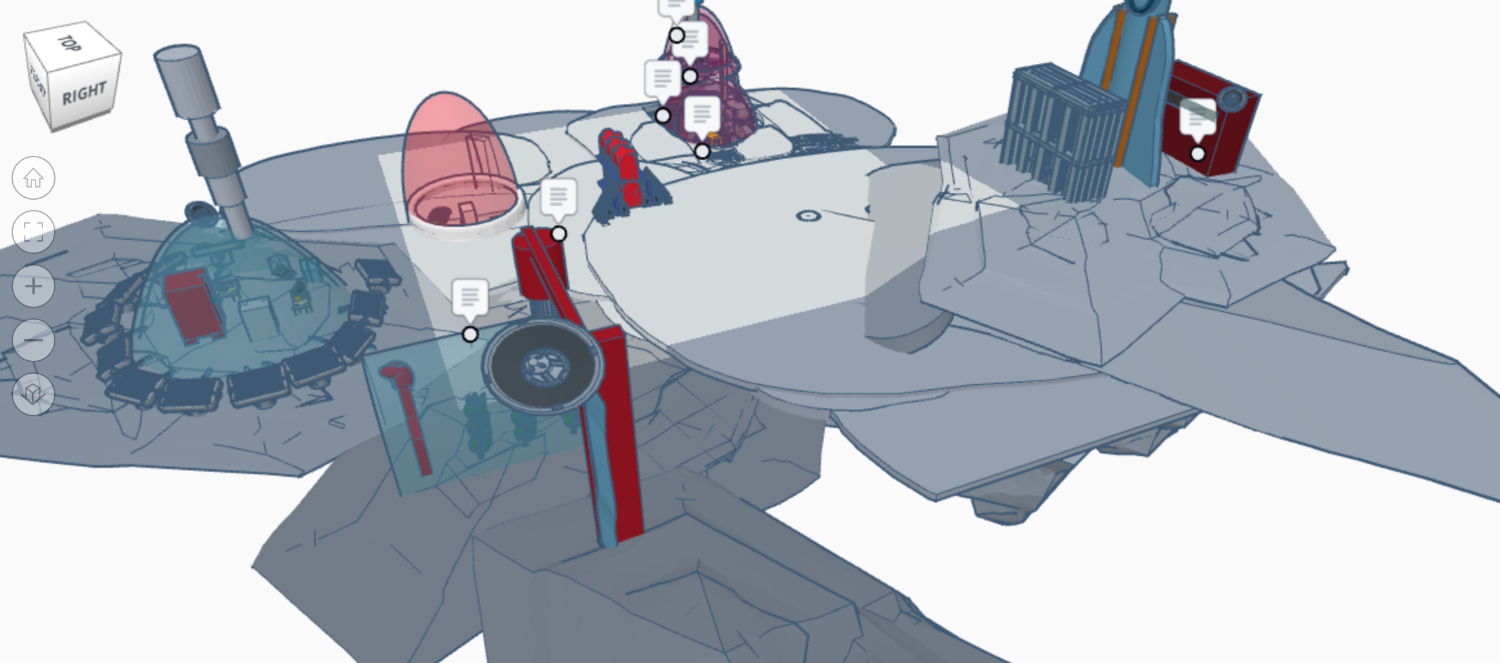Moon Camp Explorers Gallery 2021-2022
In Moon Camp Explorers each team’s mission is to 3D design a complete Moon Camp using Tinkercad. They also have to explain how they will use local resources, protect astronauts from the dangerous of space and describe the living and working facilities.
Team: Lunar Team
Ecole de Martainville Sassetot Le Mauconduit France 11, 10 6 / 3
External link for 3d
|
Project description
– Module 1 : greenhouse. – Module 2 : living room (sport, relaxation, refectory, amenities). – Module 3 : scientific research room. – Module 4 : swimming-pool with plants. – Module 5 : storage. – A field of solar panels to provide energy. – A rover that will be used for scientific exploration. – A magnetic train will carry astronauts and lunar equipment to avoid problems with lunar dust. – A rocket will be able to make the round trip with the Earth. – The modules will be brought by the rocket using origami techniques to save space. |
||||||||||||||||||||||
|
Where do you want to build your Moon Camp?
Shackleton crater Why did you choose this location?
We chose Shackleton Crater because of a large amount of frozen water and sun to grow the plants. It is also ideal for research on the history of the Moon. How do you plan to build your Mooncamp? Which materials will you use?
The modules of the base will be built of polyethylene to protect the astronauts. To save space, these polyethylene panels will arrive folded in origami in the cap of the rocket. |
||||||||||||||||||||||
|
Water
|
Food
|
Electricity
|
Air
|
Protection
|
||||||||||||||||||
|
Water will be obtained through ice in Shackleton Crater. |
Initially, the food will come from the Earth. |
The sun shines all the time near the Shackleton crater. |
There will be 4 astronauts in our team. |
It takes 20 cm of polyethylene to protect habitats from sunlight and radiation from space, as well as meteorites. |
||||||||||||||||||
|
Describe a day on the Moon for one of your Moon Camp astronauts
|
||||||||||||||||||||||
Other projects:







